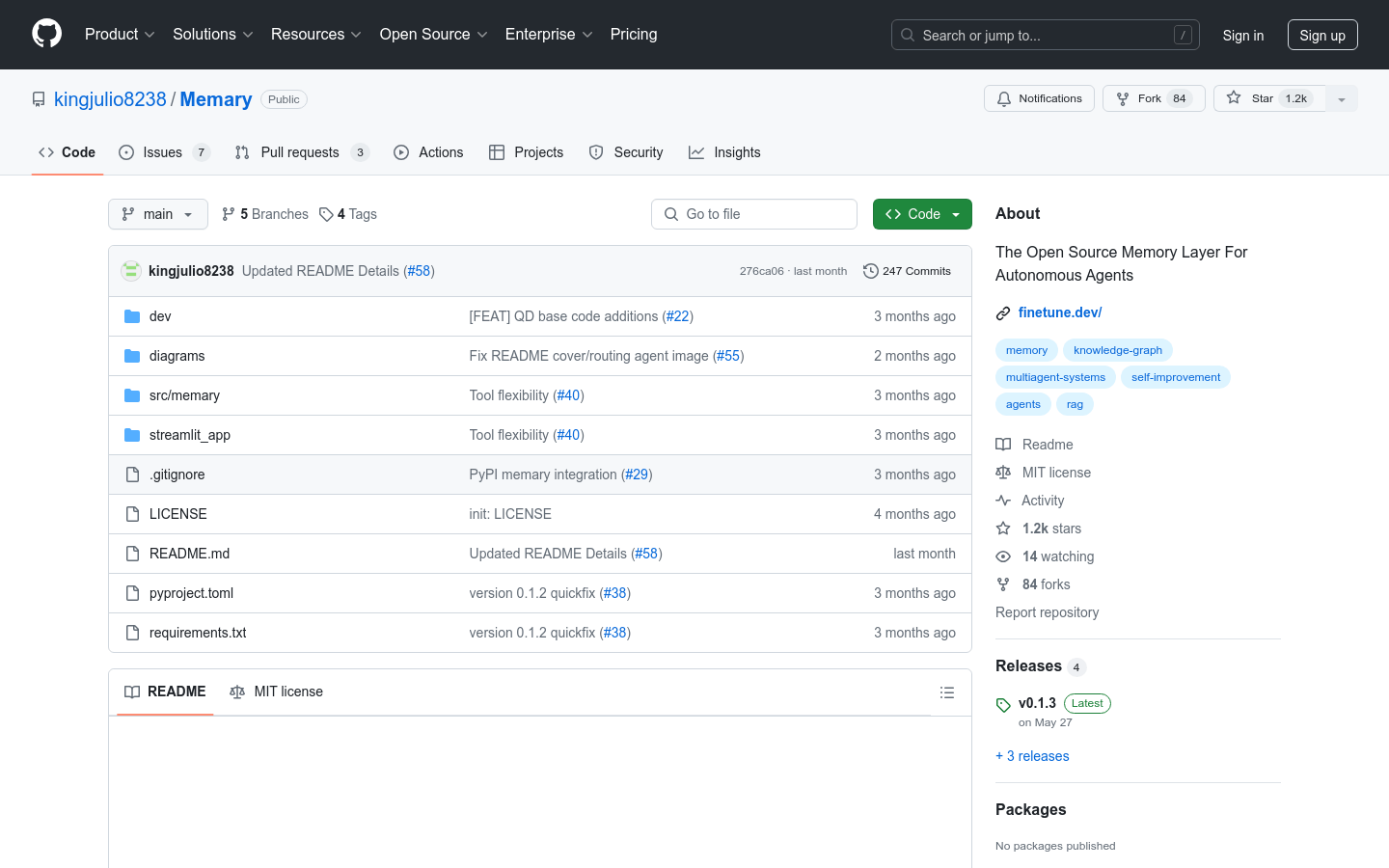

Memary
Overview :
Memary is an open-source memory layer designed specifically for autonomous agents, enhancing their reasoning and learning abilities by mimicking human memory. It utilizes the Neo4j graph database to store knowledge and integrates with the Llama Index and Perplexity models to improve the querying capabilities of the knowledge graph. Key features of Memary include automatic memory generation, a memory module, system improvement, and memory recall, all aimed at seamlessly integrating with existing agents through minimal developer intervention, while offering visual data for memory analysis and system enhancement via a dashboard.
Target Users :
Memary's target audience primarily consists of developers and researchers in the fields of artificial intelligence and machine learning, particularly those professionals dedicated to creating autonomous agents with advanced reasoning capabilities. It is suitable for high-level application scenarios that require simulating human memory processes to enhance agent performance.
Use Cases
For developing chatbots with long-term memory capabilities.
To be integrated into existing intelligent systems for offering more personalized services.
As part of a research project to explore memory and learning mechanisms in artificial intelligence.
Features
Automatic memory generation: Memory is automatically updated during agent interactions.
Memory module: Tracks user preferences and displays them on a dashboard for analysis.
System improvement: Simulates the evolution of human memory over time.
Memory recall: Retains all chat logs for retracing the agent's execution process.
Knowledge graph: Utilizes the Neo4j graph database for knowledge storage and management.
Memory dashboard: Provides a visual interface for accessing, analyzing, and recalling memory.
Custom tools: Allows developers to add or remove tools used by the agent.
How to Use
1. Install Memary: Use pip to install, ensuring your Python version meets the requirements.
2. Create a virtual environment: Set up and activate a virtual environment based on the specified Python version.
3. Install Python dependencies: Install the necessary Python libraries according to project requirements.
4. Configure environment variables: Set up the necessary API keys and database connection information in the .env file.
5. Initialize Memary: Use the provided code snippets to create an agent and initialize Memary.
6. Add custom tools: Add or remove tools from the agent as needed.
7. Utilize Memary features: Interact with Memary through the agent to leverage its memory and querying functionalities.
Featured AI Tools

Gemini
Gemini is the latest generation of AI system developed by Google DeepMind. It excels in multimodal reasoning, enabling seamless interaction between text, images, videos, audio, and code. Gemini surpasses previous models in language understanding, reasoning, mathematics, programming, and other fields, becoming one of the most powerful AI systems to date. It comes in three different scales to meet various needs from edge computing to cloud computing. Gemini can be widely applied in creative design, writing assistance, question answering, code generation, and more.
AI Model
11.4M
Chinese Picks

Liblibai
LiblibAI is a leading Chinese AI creative platform offering powerful AI creative tools to help creators bring their imagination to life. The platform provides a vast library of free AI creative models, allowing users to search and utilize these models for image, text, and audio creations. Users can also train their own AI models on the platform. Focused on the diverse needs of creators, LiblibAI is committed to creating inclusive conditions and serving the creative industry, ensuring that everyone can enjoy the joy of creation.
AI Model
6.9M













